India News
Fact About Girls Education in India
In 2017, India was positioned 130 in human improvement out of the world’s nations, placing the nation on the medium level concerning human turn of events. This position is because of approaching obstructions that keep young ladies from equivalent admittance to India’s scholarly chances.

In 2017, India was positioned 130 in human improvement out of the world’s nations, placing the nation on the medium level concerning human turn of events. This position is because of approaching obstructions that keep young girls from equivalent admittance to India’s scholarly chances. By offering more to young ladies’ training, India’s positioning would improve as it would assist with lightening some neediness. This article presents the main 10 realities about young girls’ training in India.
10 Facts About Girls Education in India
The station framework, going back to 1200 BCE, is a type of segregation that had been authoritatively prohibited in 1955; notwithstanding, its impact flourishes in India’s cutting edge training framework. On the head of the framework is a gathering called the Brahmins, and at the base are Dalits (“untouchables”). This strategy has kept numerous Dalit young ladies separated from promising educational undertakings. These youngsters are frequently from their companions isolated during noon and mocked by them in class. This way of talking makes 51 percent of Dalit youngsters drop out of grade school. Another law passed in 1989 should secure the Dalit rank, however it isn’t in effect adequately implemented.
Sex disparity has discouraged instruction for young Girls in India for quite a while. In 2017, 32 percent of young ladies were not taken a crack at school in contrast with 28 percent of young men. Male’s instruction in India is more esteemed, subsequently; it is regularly observed as superfluous to monetarily uphold a young lady’s training because of these coupling sexual orientation jobs.
In ruined towns where schools are out of reach and not supported, sexual orientation jobs lead to 33% of young ladies in India offering their instructive fates. As high as 47 per cent of the young Girls in India are dependent upon marriage by 18 years old. This prompts early pregnancies, which makes it difficult to go to class as they should bear the shame and the extra outstanding burden. A few locales likewise don’t allow pregnant young ladies to go to class, which puts instruction much further from their grip.
In 2009, the Right to Education Act (RTE), ordered that it is the privilege of each youngster to acquire a base measure of instruction. The program should make it obligatory for youngsters ages 6 to 14 to get to instructive open doors as more arrangements were sanctioned. This was a positive development, yet more should be never really close the sex hole and retrain society to esteem young Girls’ instruction.
The Right to Education Act in India appears to have improved the nation’s positioning when taking a gander at the development in proficiency rates. In 2001, education rates were 64.8 per cent; be that as it may, this had expanded to 74.04 percent by 2011. Starting at 2001, around 54 percent of young ladies were proficient; be that as it may, after the RTE, the rate had expanded to more than 65 by 2011.
Consistently, 23 million young ladies in India drop out of school after they start discharging because of absence of clean napkin allocators and generally speaking cleanliness mindfulness in schools. Absence of regenerative instruction leaves 71 per cent of young girls unconscious of what happens in their bodies during period. Numerous young ladies even accept that was is going on is “messy” and dishonorable. Indeed, even with mindfulness, absence of clean cushions in rustic regions power young ladies to utilize materials that occasionally cause contaminations; just a few ladies utilize sterile cushions.
In any event 47 per cent of schools need latrines, compelling young ladies to free their substantial waste onto the roads, which is ethically corrupting to them. This is another explanation they drop out of school, to evade this disgrace. RTE included adding latrines to schools to tackle this issue, however it wasn’t sufficient. Thusly, the Department of School Education and Literacy under Ministry of HRD executed a program named, Swachh Vidyalaya, which would add $4,582.91 worth of girls to schools.
In Bihar, where the education rate for young girls is 20 focuses lower than for their male partners, the journey to class is far. For somebody in the Rampur Singhara town, the journey is 4 miles, and the transport admission is too costly to even think about sending the kid to class. Be that as it may, the state government has given free bicycles to families to support a higher proficiency rate in less fortunate locales like Bihar. The bike program in a flash demonstrated accomplishment as the quantity of young ladies enrolling for schools went from 175,000 to 600,000 in the range of four years.
India is growing its viewpoints with innovation to battle lack of education, and it appears to be that ladies are profiting the most. PC Based Functional Literacy (CBFL) shows the nuts and bolts of perusing. This program targets people ages 20 to 50, which branches out India’s instruction framework as far as the age for both genders. Ladies contained 81 per cent of the individuals who pursued this proficient program. Young Girls who are at home because of neediness, sex jobs or a large group of different reasons can participate in instruction, accordingly expanding the proficiency rate.
The destitution rate in India has declined from approximately 54 percent in 1983 to 21.2 percent in 2011 since the time instructive enhancements started occurring. Knowing this, it very well may be discovered that if India gave more assets to young girls’ training, its GDP would increment. By essentially expanding young ladies’ enlistment in auxiliary school by 1 percent, the GDP in India would increment by $5.5 billion.
Read Also: What is education? A definition of education.
India expects to develop from a medium created nation to one of higher position. Thinking about its ongoing steps in instruction, it is workable for India to accomplish this objective. Nonetheless, this must be finished by acknowledging there is still more work to be done in shutting the hole among young men and young girls as these best 10 realities about young ladies’ training in India show.
2024 Lok Sabha Elections
Mallikarjun Kharge vows to continue politics till his last breath to defeat BJP
The 81-year-old Congress leader was speaking at a election rally in Afzalpur and said that if the people did not vote for the Congress candidate, he would think that he did not have any place in Kalaburagi anymore.

Congress President M Mallikarjun Kharge on Wednesday appealed to the people of Kalaburagi to at least attend his funeral if they thought he worked for them even though they do not wish to vote for Congress in the ongoing Lok Sabha elections.
The 81-year-old Congress leader was speaking at a election rally in Afzalpur and said that if the people did not vote for the Congress candidate, he would think that he did not have any place in Kalaburagi anymore. The Congress President sought an emotional chord with the people of his home district of Kalaburagi, Karnataka
The grand old party has fielded Kharge’s son-in-law Radhakrishna Doddamani from Kalaburagi, against BJP’s sitting MP Umesh Jadhav. Kharge had won the Lok Sabha elections from Kalaburagi in 2009 and 2014, but lost in 2019. He appealed to the voters to vote for Congress but at least come to his funeral if they thought that he had done some work in Kalaburagi. Kharge added that he would continue in politics till his last breath to defeat the BJP and RSS ideology.
The Congress leader said he is born for politics and whether or not he contests the election, he will continue to strive till his last breath to save the Constitution and democracy of the country. He asserted that he will not retire from politics. Kharge said that retirement happens from a position but one should not retire from his/her principles. He said he is born to defeat the ideology of the BJP and RSS and not to surrender before them.
He advised Karnataka Chief Minister Siddaramaiah, who shared the stage with him, to follow his principles. He said he had told Siddaramaiah many times that he may retire as CM or MLA, but he cannot retire from politics till he defeats the ideology of the BJP and RSS.
2024 Lok Sabha Elections
Nitin Gadkari says he’s better now after collapsing at election rally in Maharashtra’s Yavatmal
A disturbing video of the incident – which was unfortunately streamed live on X (formerly Twitter), including by his own account – showed Nitin Gadkari being carried away by those on stage, many of whom rushed to form a shield around the BJP leader to give him, and those treating him, some privacy.
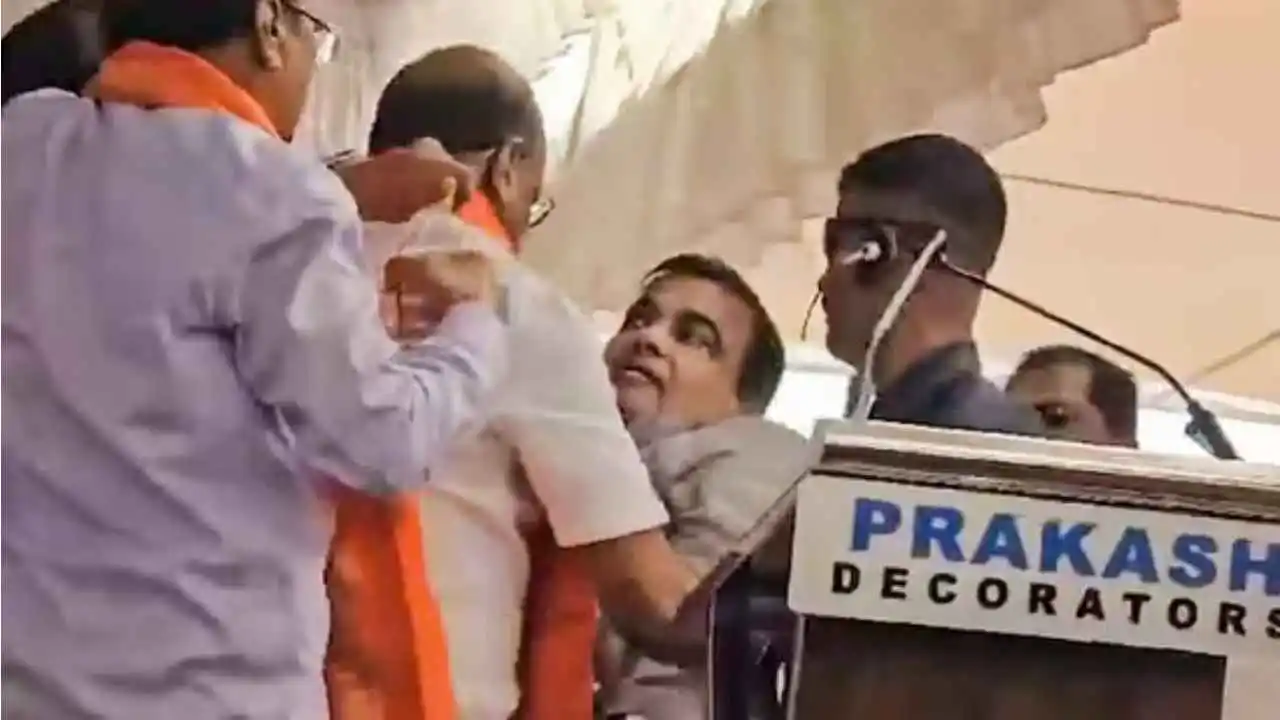
Union Road Transport and Highways Minister Nitin Gadkari collapsed while speaking at an election rally in Maharashtra’s Yavatmal on Wednesday afternoon. Fortunately, the senior Bharatiya Janata Party leader received prompt treatment and was able, after a brief pause, to get back up on stage and continue his speech.
A disturbing video of the incident – which was unfortunately streamed live on X (formerly Twitter), including by his own account – showed Nitin Gadkari being carried away by those on stage, many of whom rushed to form a shield around the BJP leader to give him, and those treating him, some privacy.
Nitin Gadkari took to X and informed that he felt uncomfortable due to the heat during the rally in Pusad, Maharashtra. But now he is completely healthy and is leaving for Varud to attend the next meeting. He thanked his supporters and well wishers for their love and good wishes.
Gadkari, who fought the elections in the first phase of voting as BJP’s candidate from Nagpur Lok Sabha seat, was campaigning for Eknath Shinde-led Shiv Sena leader Rajashree Patil in Yavatmal’s Pusad. Addressing the rally, the union minister said, he was confident that the people of Yavatmal district, which has a constant tendency towards development, will give victory to the BJP-Maha alliance, which believes in all-round development.
Gadkari posted on X that as the nation moves towards a developed India, under the leadership of Prime Minister Narendra Modi, significant work has been done in the last 10 years in the areas of roads and highways as well as health, education and other sectors across the country. He said many schemes of the central government were successfully extended to the rural areas. Due to this, along with the city, the people of the rural areas are also able to benefit from many important facilities.
The Yavatmal constituency along with Akola, Buldhana, Amravati, Hingoli, Wardha, Parbhani and Nanded in Maharashtra are scheduled to vote in the second phase of the Lok Sabha election on April 26.
2024 Lok Sabha Elections
PM Narendra Modi slams Congress over Sam Pitroda’s inheritance tax remarks, accuses Congress of intending to impose higher taxes
PM Modi was speaking at a public meeting in Chhattisgarh’s Surguja, where he alleged that the Congress wants to fill its own coffers by imposing ever higher taxes and not allowing people to pass on their hard-earned wealth to their children.
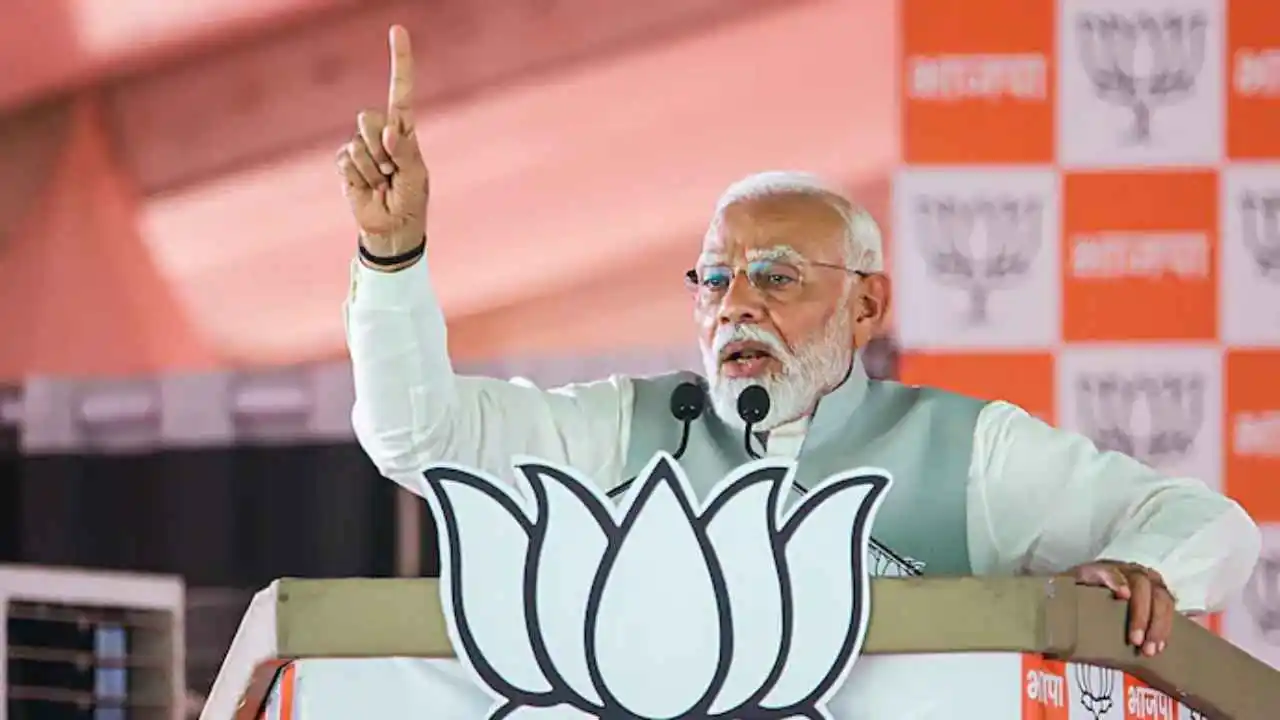
Prime Minister Narendra Modi on Wednesday launched a scathing attack on Congress after Sam Pitroda advocated for a US-style inheritance tax amid the ongoing debate over wealth redistribution. The comments have further fuelled an already-raging controversy over Rahul Gandhi’s promise to conduct a wealth survey if the Congress won the Lok Sabha election.
PM Modi was speaking at a public meeting in Chhattisgarh’s Surguja, where he alleged that the Congress wants to fill its own coffers by imposing ever higher taxes and not allowing people to pass on their hard-earned wealth to their children.
The Prime minister said the advisor (Sam Pitroda) of the prince and the royal family had said some time ago that more taxes should be imposed on the middle class. He said the Congress party says that it will impose an inheritance tax, and it will also impose tax on the inheritance received from parents. PM Modi added the children will not get the wealth that their parents accumulate through their hard work, rather the Congress party will snatch it away from them.
PM Modi said Pitroda’s remarks have exposed the dangerous intentions of the Congress. He took a veiled jibe at the Congress and said the party has only one mantra – to loot people zindagi ke sath bhi, zindagi ke baad bhi (in life and even after death).
The prime minister did not take any names and targeted the Gandhi family and said, those people who considered the entire Congress party as their ancestral property and handed it over to their children, now do not want Indians to pass on their property to their younger generations.
Indian Overseas Congress chairman Sam Pitroda while talking to the media backed his party’s stand on redistribution of wealth and called for a policy for the same while citing the concept of inheritance tax prevailing in some American states.
-

 2024 Lok Sabha Elections13 hours ago
2024 Lok Sabha Elections13 hours agoRahul Gandhi clarifies on wealth survey remark, says aim is to identify injustice
-

 Cricket news14 hours ago
Cricket news14 hours agoIPL 2024: Marcus Stoinis hits first IPL century as Lucknow Super Giants beat Chennai Super Kings by 6 wickets
-
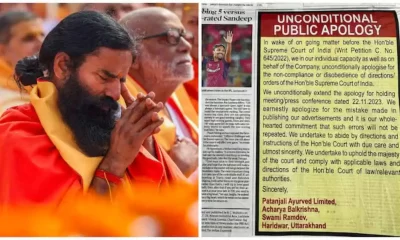
 India News12 hours ago
India News12 hours agoRamdev, Balkrishna publish bigger apology in newspapers after Supreme Court’s rap
-
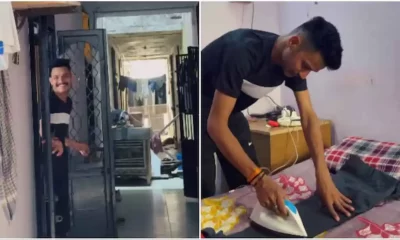
 Trending11 hours ago
Trending11 hours agoA waiter’s life: Social media users go emotional on watching viral video
-

 2024 Lok Sabha Elections10 hours ago
2024 Lok Sabha Elections10 hours agoPM Narendra Modi slams Congress over Sam Pitroda’s inheritance tax remarks, accuses Congress of intending to impose higher taxes
-
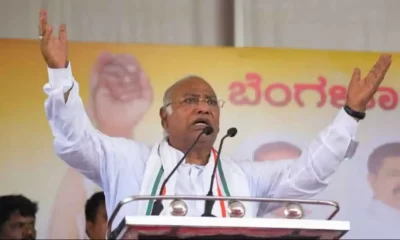
 2024 Lok Sabha Elections6 hours ago
2024 Lok Sabha Elections6 hours agoMallikarjun Kharge vows to continue politics till his last breath to defeat BJP
-

 2024 Lok Sabha Elections7 hours ago
2024 Lok Sabha Elections7 hours agoNitin Gadkari says he’s better now after collapsing at election rally in Maharashtra’s Yavatmal
-

 Entertainment8 hours ago
Entertainment8 hours agoMadhuri Dixit, Karisma Kapoor recreate Dil To Pagal Hai dance battle on Dance Deewane

